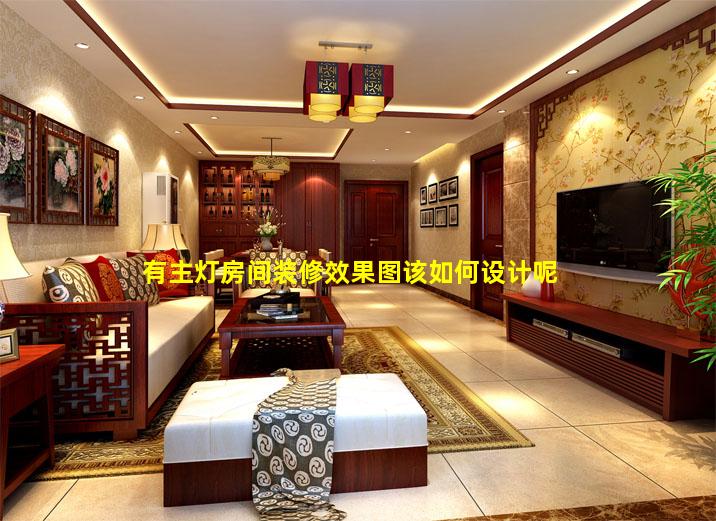一、有主灯房间装修效果图该如何设计呢
有主灯房间装修效果图设计指南
1. 选择合适的主灯
考虑房间大小和形状。
选择与房间风格相匹配的主灯。
确保主灯提供充足的照明。
2. 布置辅助照明
使用台灯、落地灯或壁灯补充主灯的照明。
将辅助照明放置在需要额外照明的区域,例如阅读角或工作区。
3. 考虑自然光
利用窗户和天窗引入自然光。
将家具和装饰品放置在可以最大化自然光的位置。
4. 创建层次感
使用不同类型的照明,例如主灯、辅助照明和自然光,来创建层次感。
调整照明强度以营造不同的氛围。
5. 考虑功能性
确保照明满足房间的功能需求。
在工作区提供充足的照明,在休息区提供柔和的照明。
6. 协调颜色和纹理
选择与房间配色方案相协调的主灯和辅助照明。
使用不同纹理的灯具来增加视觉趣味。
7. 关注细节
注意灯具的形状、大小和比例。
选择与房间整体风格相匹配的灯罩和灯泡。
示例效果图:
现代风格房间:
主灯:简约的吊灯,提供充足的照明。
辅助照明:落地灯和台灯,用于阅读和工作。
自然光:大窗户,引入充足的自然光。
传统风格房间:
主灯:华丽的水晶吊灯,营造优雅的氛围。
辅助照明:壁灯和台灯,提供柔和的照明。
自然光:天窗,引入自然光,突出房间的建筑细节。
温馨风格房间:
主灯:编织灯罩的吊灯,营造温馨的氛围。
辅助照明:台灯和落地灯,提供舒适的照明。
自然光:窗户,引入柔和的自然光,营造放松的氛围。
二、有主灯房间装修效果图该如何设计呢视频
有主灯房间装修效果图设计视频
步骤 1:确定主灯类型
吊灯:悬挂在天花板上的灯具,适合高挑的天花板。
吸顶灯:安装在天花板上的灯具,适合低矮的天花板。
壁灯:安装在墙壁上的灯具,提供辅助照明。
步骤 2:选择主灯风格
现代:线条简洁、几何形状。
传统:华丽的装饰、水晶或玻璃元素。
工业:金属、裸露的灯泡。
波西米亚:异国情调的图案、流苏。
步骤 3:确定主灯尺寸
房间面积:主灯直径应为房间长度和宽度的总和的 1/4。
天花板高度:高挑的天花板需要更大的主灯。
步骤 4:选择辅助照明
台灯:提供局部照明,适合阅读或工作。
落地灯:提供环境照明,营造温馨氛围。
射灯:突出特定区域或艺术品。
步骤 5:考虑自然光
大窗户:自然光充足,可以减少主灯的使用。
小窗户:需要更强的照明,主灯应更亮。
步骤 6:创建照明方案
分层照明:使用主灯、辅助照明和自然光创造不同的照明效果。
调光器:允许调节照明强度,营造不同的氛围。
步骤 7:选择灯泡
色温:暖光(2700K3000K)营造温馨氛围,冷光(5000K6500K)提供更明亮的照明。
流明:流明值越高,灯泡越亮。
步骤 8:安装主灯
聘请电工进行专业安装。
确保主灯牢固固定在天花板上。
步骤 9:完成效果
添加辅助照明和装饰元素,如窗帘、地毯和艺术品。
调整照明方案,营造理想的氛围。

三、有主灯房间装修效果图该如何设计呢英语
How to Design a Room with a Chandelier
A chandelier is a beautiful and elegant way to add light and style to any room. But if you're not careful, it can also be overwhelming. Here are a few tips on how to design a room with a chandelier so that it looks its best:
1. Choose the right size chandelier. The size of the chandelier should be proportionate to the size of the room. A small chandelier in a large room will look lost, while a large chandelier in a small room will overwhelm the space.
2. Hang the chandelier at the right height. The bottom of the chandelier should be about 30 inches above the floor. This will ensure that it provides enough light without being too blinding.
3. Choose the right style chandelier. The style of the chandelier should complement the style of the room. A traditional chandelier will look out of place in a modern room, and vice versa.
4. Add other lighting to the room. A chandelier is not the only source of light that you need in a room. You should also add other lighting, such as lamps and sconces, to create a more balanced and inviting space.
5. Don't be afraid to experiment. There are no hard and fast rules when it comes to decorating with chandeliers. Experiment with different sizes, styles, and heights until you find a look that you love.
Here are some additional tips for designing a room with a chandelier:
If you have a high ceiling, you can hang a chandelier that is longer than usual.
If you have a low ceiling, you can hang a chandelier that is shorter than usual.
You can use a dimmer switch to control the brightness of the chandelier.
You can add crystals or other embellishments to the chandelier to make it more glamorous.
You can use a chandelier to create a focal point in the room.
With a little planning, you can use a chandelier to create a beautiful and inviting space that you'll love for years to come.
四、房间有主灯好还是无主灯好
有主灯的优点:
明亮均匀:主灯提供集中且均匀的光线,照亮整个房间。
易于控制:主灯通常配有开关或调光器,便于控制光线强度。
传统美观:主灯是传统家居装饰的常见元素,可以增添优雅感。
易于安装:主灯通常安装在房间中央的天花板上,安装相对简单。
无主灯的优点:
灵活照明:无主灯设计使用多个光源,如筒灯、射灯和壁灯,提供更灵活的照明方案。
营造氛围:不同的光源可以营造不同的氛围,从温馨舒适到明亮现代。
节能:无主灯设计通常使用LED灯具,比传统主灯更节能。
现代美观:无主灯设计是现代家居装饰的流行趋势,营造出时尚简约的氛围。
选择建议:选择有主灯还是无主灯取决于个人喜好、房间大小和功能。
小房间:小房间更适合有主灯,以提供均匀的照明。
大房间:大房间可以考虑无主灯设计,以提供更灵活的照明方案。
功能性房间:厨房、浴室等功能性房间需要明亮均匀的照明,因此更适合有主灯。
装饰性房间:卧室、客厅等装饰性房间可以考虑无主灯设计,以营造不同的氛围。
综合考虑: 预算:无主灯设计通常比有主灯设计更昂贵。
安装难度:无主灯设计需要更多的电气布线和安装工作。
维护:无主灯设计中的多个光源需要定期维护和更换。


.jpg)
.jpg)
.jpg)
.jpg)
.jpg)
.jpg)